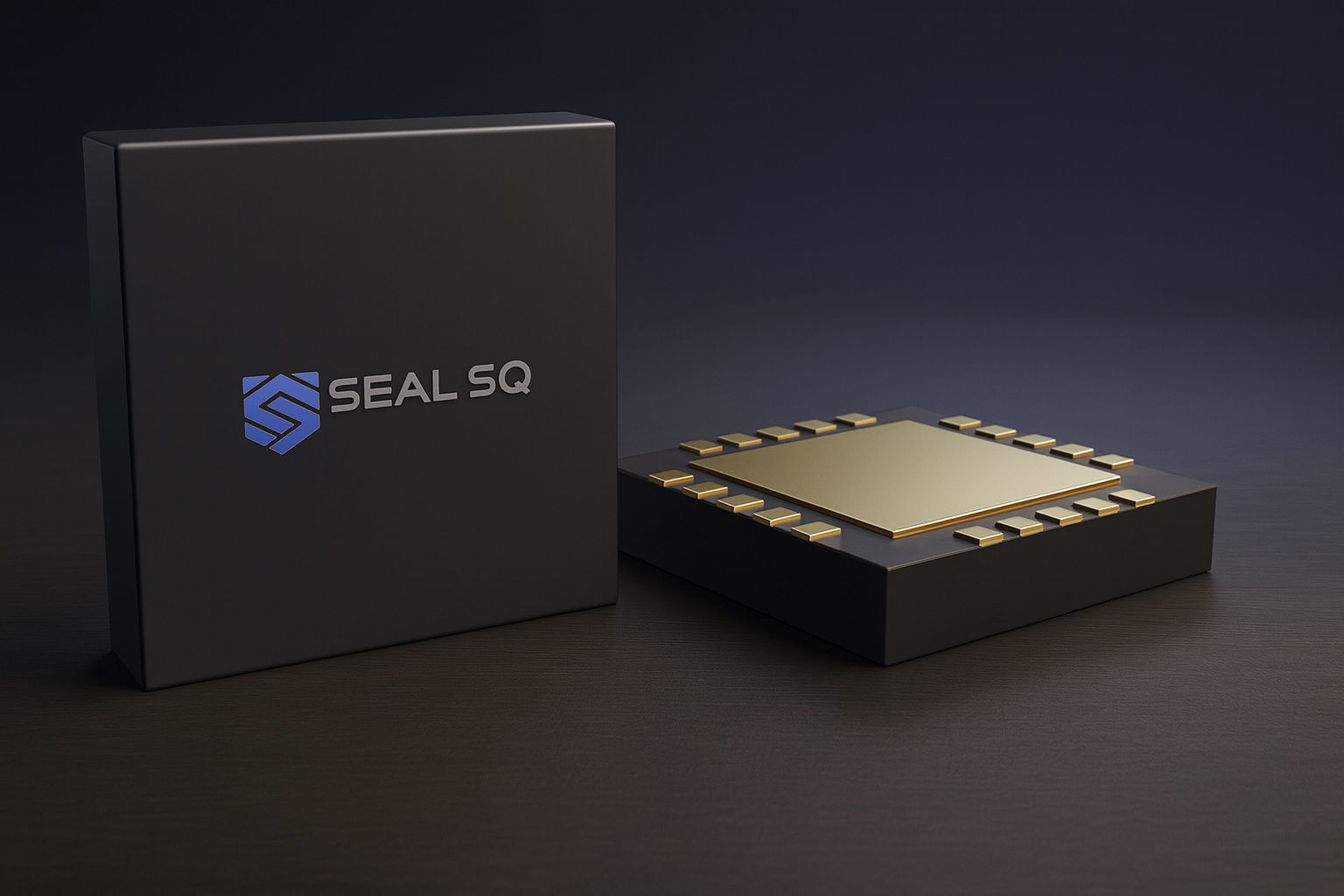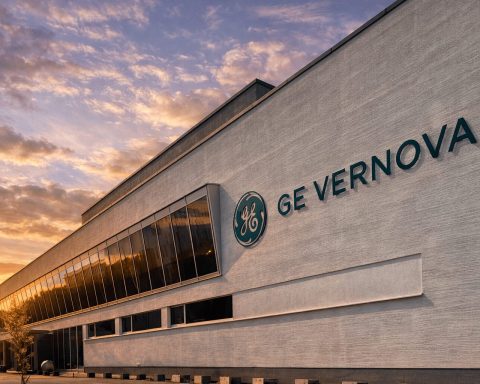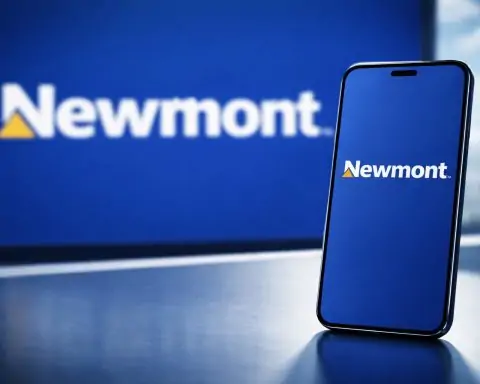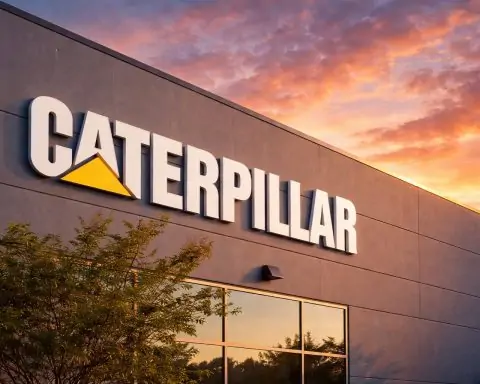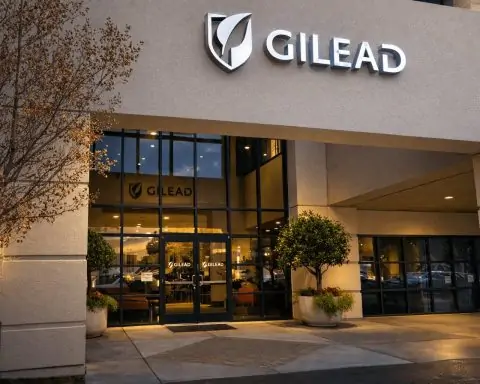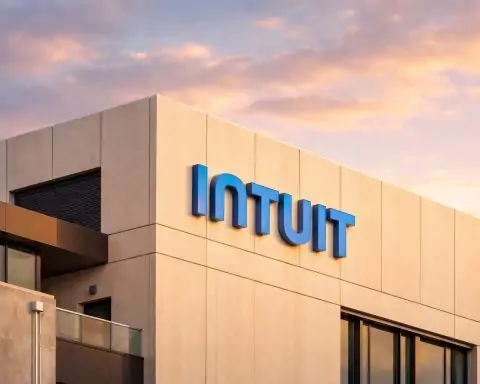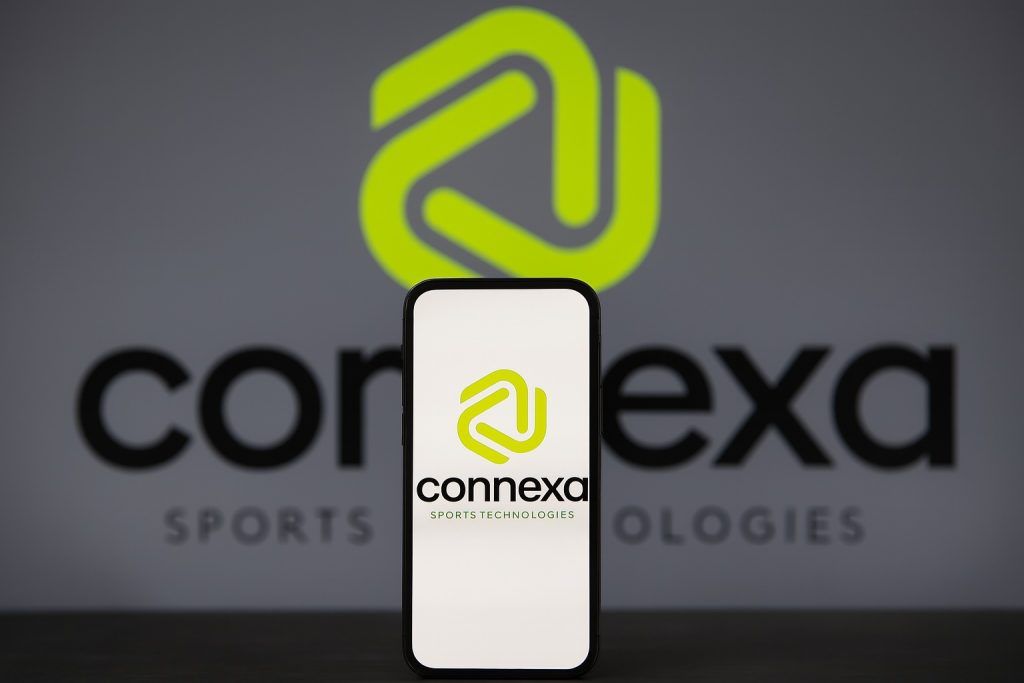- Price Surge: SEALSQ’s NASDAQ-listed stock (LAES) skyrocketed in mid-October 2025 – up ~39.7% on Oct 9 and another ~24.8% on Oct 14, closing around $7.65 [1]. This pushed the company’s market cap close to $1.0 billion [2]. By Oct 17 the stock traded near $6.67 [3], roughly double its level just a month earlier.
- Major Partnerships: In just days, SEALSQ announced multiple high-profile collaborations: a strategic post-quantum KYC solution with Wecan Group (Oct 14) [4]; an expanded smart-grid cybersecurity deal with Landis+Gyr (Oct 13) [5]; and a US “Made in America” PQC chip venture with Trusted Semiconductor Solutions (TSS) (Oct 9) [6]. Each announcement helped fuel the stock rally.
- Growth & Capital Raise: Preliminary 9M 2025 revenue was ~$9.9 million (+41% YoY) [7], and Q3 alone ($5.1M) beat H1. Management reaffirmed full-year 2025 sales guidance of $17.5–20.0 M (≈60–80% growth) [8]. To fund its roadmap, SEALSQ priced a $200 million offering on Oct 15 (12.64 M shares + warrants at $7.50 each) [9]. Management says the deal leaves it with roughly $400 M cash post-close (Oct 16) [10] – a war chest for R&D and expansion.
- Product Pipeline: SEALSQ is rolling out new tech: its Quantum Shield QS7001 secure microcontroller (the first with NIST-certified post-quantum algorithms) is due in November 2025 [11]. A next-gen “QVault” PQ-resistant TPM chip follows in 2026 [12]. Even more exotically, parent WISeKey plans a nanosatellite launch (Nov 2025) carrying SEALSQ’s crypto tech to demonstrate post-quantum secure communications from space [13].
- Valuation & Analyst Views: The stock now trades at an extraordinarily high valuation – price/sales ≈ 106× [14] due to tiny revenues. Wall Street’s sentiment is cautious: most analysts rate LAES “Hold/Neutral” with 12-month targets in the $6.00–$6.50 range [15] [16], near current levels. TipRanks’ consensus is a “Moderate Buy” with an average $6.25 target [17]. In short, although momentum is strong, models warn of valuation and execution risks ahead [18] [19].
- Market Context: Broader tech trends are favorable. The Philadelphia Semiconductor Index jumped ~15% since September on AI-chip demand [20]. Governments are mandating quantum-safe security (e.g. US federal systems must be PQC-compliant by 2027 [21]). Industry forecasts see quantum cybersecurity exploding from today’s ~$4 billion to about $72 billion by 2035 [22]. SEALSQ is positioning itself at the heart of this wave – a potential boon if it can capture a slice of that future market.
Major Deals Drive Stock Rally
SEALSQ’s fusion of encryption and chips, visualized here, captures why the stock has captured traders’ imagination. In October 2025 SEALSQ unveiled a flurry of partnerships across finance, energy and defense – each triggering big stock jumps [23]. For example, on Oct 14 the company announced it would team with Swiss regtech Wecan Group to build a post-quantum “know-your-customer” (KYC) system for banks [24]. The day before, SEALSQ expanded its smart-grid cybersecurity pact with Landis+Gyr, deploying SEALSQ’s PKI solutions in North American utility meters [25]. And on Oct 9 it joined forces with Trusted Semiconductor Solutions (TSS) to co-develop “Made in USA” defense-grade chips with built-in post-quantum cryptography [26]. TS² TechStock notes these deals “plug SEALSQ’s hardware encryption tech into established players,” validating its vision [27]. The market greeted each update with enthusiasm: trading volumes spiked (e.g. 117 M shares on Oct 9 [28]) and the share price surged accordingly.
Even sister-company collaborations added buzz: SEALSQ’s own affiliate SEALCOIN AG announced a “quantum-resilient AI agents” project in early October [29]. All together, the news flow painted SEALSQ as the post-quantum startup of the moment. However, some veterans caution these “wild swings” reflect huge promise and risk [30] – a reminder that the stock is still fundamentally a microcap play.
Stock Performance and Valuation
SEALSQ’s stock performance has indeed been volatile. After trading under $5 for much of 2025, LAES jumped to ~$6.09 on Oct 9 (a +39.7% one-day gain) and by Oct 14 had closed near $7.65 [31]. The Nasdaq quote on Oct 17 was $6.67 [32]. The company now has about 142.7 million shares outstanding [33], making its market capitalization roughly $1.17 billion [34]. By comparison, leading chipmakers (like Intel or Infineon) are worth tens of billions – SEALSQ remains tiny. But the recent gains have catapulted it into a near-$1B valuation.
This valuation is richly stretched: Reuters data show LAES trading at a price-to-sales ratio over 100× [35], far above industry norms (even high-growth chip firms are usually <10×). The flip side is that forward P/E is meaningless (it’s unprofitable). Analysts warn this contrasts with fundamental results – revenues are still in the single-digit millions. The jump to ~$6–7 is largely on sentiment and future promise, not earnings.
Indeed, consensus targets underscore the caution. WSJ-surveyed analysts average a price target around ~$6.00–6.50 (essentially flat to current) [36]. TipRanks pegs an average one-year target ~$6.25 [37]. In other words, at today’s prices the market has already baked in most bullish forecasts. Still, some long-term optimists note that “a single new contract could be material” – and argue there might be upside above $7–8 if SEALSQ hits its ambitious milestones [38].
Technology Roadmap: Chips, PKI and Satellites
Behind the hype are concrete product plans. SEALSQ is one of the first companies developing hardware with embedded post-quantum cryptography (PQC) – encryption that even future quantum computers can’t easily break. Its flagship Quantum Shield QS7001 secure element chip is slated for launch in Nov. 2025; it incorporates the latest NIST-approved PQC algorithms in silicon [39] [40]. (This would make it among the industry’s first PQC-ready semiconductors.) The next node is a “QVault” TPM (Trusted Platform Module) – a crypto co-processor for devices and servers – targeted for 2026 [41].
On the software side, SEALSQ’s PKI (Public Key Infrastructure) platform is being extended to partner networks. For instance, Landis+Gyr will use SEALSQ’s PKI to inject unique digital certificates into every North American smart meter it manufactures [42]. This end-to-end approach means devices are “born secure” against quantum attacks. In parallel, SEALSQ is working with Wecan to integrate its post-quantum crypto into financial KYC systems, protecting client data from future decryption [43].
In a demonstration of “quantum security beyond Earth,” WISeKey’s satellite unit will carry SEALSQ’s tech into orbit on Nov 10, 2025. This nano-satellite will use SEALSQ cryptography to authenticate and encrypt data links – a proof-of-concept for PQC in space [44]. Taken together, these developments signal SEALSQ’s goal: to become a full-spectrum provider of quantum-safe hardware and services. If successful, the conceptual unity of these products (chips, certificates, cloud services, even satellites) could justify the premium multiple investors are paying now.
Financials and Analyst Commentary
SEALSQ’s logo and branding highlight its fusion of semiconductors and “post-quantum” crypto – a niche pointedly forecast to grow to ~$72 B by 2035 [45]. Wall Street is watching closely if these strategies will translate into real results. As noted, SEALSQ’s revenue base is small: 9M 2025 sales were only ~$9.9 M [46], and the company still posted net losses (–$21.2 M in 2024 [47]). But growth is accelerating – management expects roughly double-digit revenue growth in coming years, supported by the new deals and product launches.
Analyst reports echo the mixed sentiment. A MarketBeat note (Oct 18) points out that SEALSQ’s volume has surged – one session saw ~33 M shares traded – yet the average analyst rating remains “Sell” [48]. Weiss Ratings has it at “sell (D+)” as of late September, while one boutique firm (Wall Street Zen) recently upgraded it to a “hold” [49]. Overall, there is no consensus “buy” rating from major banks; most simply advise investors to hold or avoid until execution proves out.
The risk is that any slowdown in news flow or missteps could reverse the rally. TS² TechStock warns that SEALSQ has exhibited “boom-bust swings” – from under $1 to over $11 in 2025 – reflecting its enormous promise and substantial risk [50]. This is a highly speculative name: very few institutional funds are in it (reportedly <1.5% of floats [51]). Online retail forums have been abuzz with “moonshot” talk, but professional traders note that technical momentum can turn quickly without fundamental follow-through.
Sector Trends and Comparisons
SEALSQ’s story is part of larger tech trends. The recent AI boom has lifted chip stocks broadly (the PHLX semiconductor index +15% since Sep [52]) and has investors hunting next-generation hardware plays. At the same time, governments worldwide are moving to mandate quantum-safe security; the U.S. NSA for example requires all new federal IT systems be quantum-resistant by 2027 [53]. These secular themes mean demand for SEALSQ’s products could be enormous.
However, SEALSQ is essentially alone among pure-play quantum-security hardware firms on public markets. It can be loosely compared to other cybersecurity chip vendors (e.g. Infineon or Microchip with secure microcontrollers), but those companies are far larger and diversified. SEALSQ’s nearest peers are small labs or startups (some acquired by bigger players) focused on PQC or IoT security. In the legacy space, giants like NXP, STMicro and Intel are not focused on PQC chips today, so SEALSQ faces little direct competition – yet also lacks any guaranteed customer base.
The stock’s run has far outstripped its peers: big-cap semiconductor names have seen relatively modest gains (e.g. TSMC, Nvidia are not up 777% as LAES was over 12 months [54]). SEALSQ trades at more than ten times the valuations of typical chipmakers (P/S ~106× [55] vs. 5–10× for peers), a bet on its future niche rather than current scale. As one tech analyst noted, investors now appear to be paying for the promise of SEALSQ’s future revenues, not its historical results [56].
Outlook: Short- and Long-Term Forecasts
In the short term, LAES is likely to stay in motion on news flow. If SEALSQ keeps delivering partnership updates, product previews or positive guidance, the stock could hold near current highs (the next technical resistance is in the $7–8 range [57]). But any misstep – such as delays in chip launches or weaker-than-expected Q4 sales – could trigger sharp profit-taking, given how richly it’s valued. Some analysts suggest the risk-reward is symmetric: at ~$6–7 the stock roughly matches street forecasts, so it might trade sideways until clearer results emerge.
Over the long term (3–5 years), the outlook depends on execution and market adoption. If the global shift to PQC accelerates as many predict, SEALSQ could find itself in a multibillion-dollar market. For instance, industry studies project the quantum-safe cybersecurity sector to climb to ~$72 billion by 2035 [58]. Should SEALSQ capture even a few percent of that, revenues would dwarf today’s base (which bulls argue justifies the current high multiple). CEO Carlos Moreira has said the new funding round “provides a solid foundation to fuel our next phase of growth” [59]. Long-term holders are betting on scenarios where SEALSQ becomes a leader in post-quantum chips and services, akin to how early 5G or AI chip pioneers eventually paid off.
Nonetheless, most professional forecasters remain cautious. Given the one-year price targets (~$6–6.50) and a Sell/Neutral consensus [60] [61], the street is not predicting a new all-time high soon. The share price may need to drop back toward those target levels before investors fully believe in the next growth phase. In sum, LAES is a high-risk, high-reward situation. Its short-term potential is tied to near-term news and technical breakout (with both upside on strong momentum and downside on pullback). The long-term potential hinges on whether SEALSQ truly turns into a leading post-quantum security supplier. As one industry report warned, it’s still “flying high” on quantum hype, but fundamental proof – i.e. sustained revenue growth and profitable scale – is needed to justify the buzz [62] [63].
Sources: Authoritative news, market data and press releases, including Reuters market stats [64], SEALSQ company filings and PRs [65] [66] [67], and technology/finance media analyses [68] [69] [70] (including TS² TechStock coverage of SEALSQ).
References
1. ts2.tech, 2. ts2.tech, 3. stockanalysis.com, 4. www.sealsq.com, 5. www.sealsq.com, 6. www.sealsq.com, 7. ts2.tech, 8. ts2.tech, 9. www.sealsq.com, 10. www.sealsq.com, 11. ts2.tech, 12. ts2.tech, 13. ts2.tech, 14. www.reuters.com, 15. ts2.tech, 16. ts2.tech, 17. www.tipranks.com, 18. ts2.tech, 19. www.tipranks.com, 20. ts2.tech, 21. ts2.tech, 22. ts2.tech, 23. ts2.tech, 24. www.sealsq.com, 25. www.sealsq.com, 26. www.sealsq.com, 27. ts2.tech, 28. ts2.tech, 29. ts2.tech, 30. ts2.tech, 31. ts2.tech, 32. stockanalysis.com, 33. www.reuters.com, 34. www.reuters.com, 35. www.reuters.com, 36. ts2.tech, 37. www.tipranks.com, 38. ts2.tech, 39. ts2.tech, 40. ts2.tech, 41. ts2.tech, 42. www.sealsq.com, 43. www.sealsq.com, 44. ts2.tech, 45. ts2.tech, 46. ts2.tech, 47. www.reuters.com, 48. www.marketbeat.com, 49. www.marketbeat.com, 50. ts2.tech, 51. www.marketbeat.com, 52. ts2.tech, 53. ts2.tech, 54. simplywall.st, 55. www.reuters.com, 56. simplywall.st, 57. ts2.tech, 58. ts2.tech, 59. www.sealsq.com, 60. ts2.tech, 61. www.marketbeat.com, 62. simplywall.st, 63. ts2.tech, 64. www.reuters.com, 65. www.sealsq.com, 66. www.sealsq.com, 67. www.sealsq.com, 68. ts2.tech, 69. ts2.tech, 70. www.marketbeat.com
